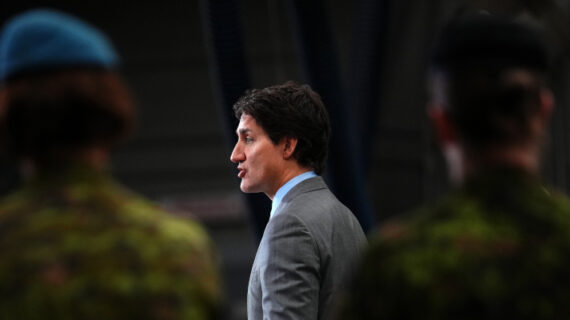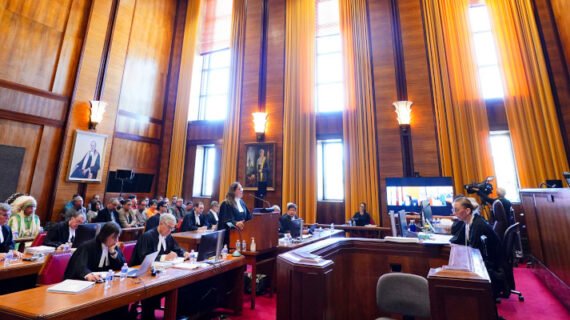Welcome to The Hub’s Federal Election 2021 Policy Pulse, where we’ll be tracking all the policy announcements from the major parties, with instant analysis from our crew of experts.
With the election scheduled for Sept. 20, we’ll be monitoring 36 days worth of policy ideas, so watch out each morning for the day’s live blog where we’ll be tracking every announcement as it happens.
5:00 p.m.
5:00 p.m. — Daily recap: The Conservatives offer some relief for gig workers
The Conservatives tackled the gig economy, the Liberals made an appeal to seniors and the NDP kept its focus on housing. Here’s the rundown, with more news and analysis below.
- Conservative leader Erin O’Toole would require gig-work companies to make contributions equivalent to CPP and EI premiums into a portable, tax-free savings account when they pay their workers. This money can be withdrawn by the worker at any time.
- NDP leader Jagmeet Singh promised that an NDP government would double the first-time home buyers’ credit and turn it into a rebate, allowing home buyers to get the money immediately, rather than at tax time.
- Liberal leader Justin Trudeau was in Quebec City this morning to announce a plan to increase the Guaranteed Income Supplement by up to $500 per year for Canadians aged 65 and older.
4:30 p.m. — Canada’s evacuation mission in Afghanistan has ended
Early this morning, it was announced that Canada’s evacuation mission in Afghanistan has ended. Overnight, an additional 1,000 were airlifted out — half by a Canadian C-17 and half by the US. With these new numbers, Gen. Wayne Eyre confirmed that over 3,700 Canadian citizens, permanent residents, Afghans, and other nationals have been evacuated by the CAF.
Below are the updated approximate totals of evacuees per country:
- United States: 95,700+
- UK: 11,000+
- Germany: 5,100+
- Italy: 4,400
- Australia: 4,000
- Canada: 3,700+
- France: 2,500+
- Netherlands: 2,500
- Spain: 1,584
- Turkey: 1,400
As observed from the figures above, Canada remains at 6th of 10 countries in total evacuations. Among G7 countries, Canada still remains at 5th place out of seven countries, only just ahead of France and Japan, with the latter only promising to evacuate 500 people from Afghanistan.
Last night, most CAF left Kabul. A small coordination team remained with allies on the ground and will stay there for a day or two.
Gen. Wayne Eyre said that the government “wished [they] could have stayed longer and rescued everyone who was so desperate to leave.” He added that Canadian personnel will have to reflect about their efforts in Afghanistan, but that Canadians still made a difference in the lives of thousands.
Despite the end of the mission, Canada will continue to help. A senior official from Global Affairs stated that the Canadian government will continue working closely with allies and other countries in the region to support Canadian citizens, permanent residents, and Afghans who had worked with Canadian military and governmental personnel.
Under a special Afghan immigration program, Immigration, Refugees, and Citizenship Canada received 2,500 applications, including 8,000 people. Close to two-thirds of applications are processed and approved, and the rest will be finalized by immigration officials.
Hours after the announcement, an explosion went off outside of Kabul airport, as confirmed by Sec. of State John Kirby. A second explosion erupted near the Baron hotel, close to the airport. At least 60 Afghans and 12 U.S. service members were killed, and 15 others were injured. All CAF members are safe and accounted for.
It is believed that the Islamic State carried out the attacks.
Note: The evacuation numbers issued by France yesterday were incorrect. The correct numbers are now reflected in this list.
3:00 p.m. — Money for health care, and the autonomy that goes with it, tops Legault’s ‘grocery list’
Antonia Maioni, a professor at McGill University, looks at Quebec’s health-care wishlist:
Quebec Premier François Legault just presented his “grocery list” of issues to the federal political parties in this fall’s election race. To no one’s surprise, an increase in health care transfers tops the chart.
While this may be a common theme for provincial premiers, in Quebec’s case it means not just more money but, just as important, lots of autonomy. Legault seemed to signal out Liberal leader Justin Trudeau’s promise to dedicate money to hire more family doctors and nurses as absurd. And he has a point. Health care, whether in Quebec or elsewhere, is a primarily provincial jurisdiction.
The federal government can’t actually “hire” anyone to deliver care in provincially governed health care systems nor can they train doctors or nurses in provincially funded medical schools.
Will it matter? The health care card has long been a winning hand for Liberal leaders in Ottawa. But, after a long pandemic experience in which Quebecers have relied on Legault’s CAQ government to bring them through this public health crisis, they may be more attentive to their premier’s wish list. And to the political party that can ensure not just money for health care but the autonomy that goes with it.
2:00 p.m. — Conservative animal welfare policies are modest, but symbolically significant
The Hub contributor Dean Tester examines the Conservative animal welfare policies:
For the first time, Conservatives have included a plan for animals in their platform.
Since Boris Johnson became leader, the U.K. Conservatives have campaigned on animal protection. And it’s been a vote winner for them because it helps show the compassionate side of a party that is often branded as not. Their Action Plan for Animal Welfare has made them a world leader on the issue.
The Canadian Conservative proposals are very modest in comparison, but as a symbol, their plan is a huge step for animal welfare.
Their commitments include:
- Cracking down on puppy mills and inhumane breeders;
- Banning cosmetic testing on animals;
- Strengthening the CFIA’s ability to enforce current regulations and seize animals imported under poor welfare conditions; and
- Supporting the closure of global wildlife markets that increase the risks of future pandemics.
The plan mostly focuses on protecting pets and pet-owners. It largely ignores animal welfare issues in the domestic animal agriculture industry.
Nonetheless, they are the first party to release a plan for animal welfare — making them the leaders in this space in Canada.
This may not be a game changing policy in this election, but expect animal issues to get more attention over time. These issues play extremely well with pet owners — according to the Conservatives, over 90 percent of pet owners view their pets as a family member. But on a broader scale Canadians are also starting to recognize the damage being done by large-scale factory farming. Animal suffering is immense in the industry, and animal agriculture is widely recognized as one of the leading causes of climate change.
Elections in other countries have shown there is real value for politicians who campaign on protecting animals.
If the Conservatives and other parties want to do more, they should consider farmed animals. There would be considerable backlash from industry, but there are also many votes to win from those who care about animals. A more ambitious plan would likely resemble the U.K. Conservative plan.
Potential ideas include:
- Ending live animal exports for slaughter
- Increasing monitoring and penalties for animal cruelty on farms
- Improving conditions for farmed animals, by setting minimum standards for journey times, space allowances, and temperature controls
- Subsidies to help farmers transition from animal agriculture to plant-based farming
1:00 p.m. — On National Dog Day, take a deep dive into Conservative animal welfare policies
The Hub’s content editor L. Graeme Smith takes a look at the animal welfare section of the Conservative platform:
It is National Dog Day. How are you planning to celebrate? Ample pets, pats, scratches, walks, belly rubs, and treats, surely. Perhaps take the afternoon off and bask in the theatre glow of our country’s most popular pet-themed CanCon export.
Or you could take the day to read the 160 page Conservative Party platform document. Sure, it may be a dog’s breakfast, but so far in this campaign only one party is looking to corner the Rufus, Spot, Daisy, and Bella constituency.
The platform contains a host of pooch-approved promises you may have missed, as well as a host of pledges to improve animal welfare, fight cruelty, and mitigate the abuse of both animals and humans. These include:
- Banning puppy mills
- Stopping unethical breeders and dealers from misleading the public by claiming to offer rescue animals or pets bred humanely when that isn’t the case.
- Banning the importation of animals bred inhumanely.
- Strengthening the Canadian Food Inspection Agency’s ability to enforce current regulations and seize animals when imported under poor welfare conditions
- Covering the cost of PTSD service dogs for veterans and creating training standards for them
- Banning cosmetic testing on animals and amending the Food and Drug Act and its regulations to implement a ban modelled on the European Union ban
- Addressing the links between violence against animals and violence against people, including providing $10 million per year to train judges and prosecutors on the links between violence against animals and violence against people
- Increasing cross-reporting between animal welfare and child welfare agencies
- Adding animal cruelty as an aggravating factor in domestic violence prosecutions to go after abusers who hurt their spouse by hurting their spouse’s pet
- Supporting pet owners fleeing violence by working with the sector to ensure that there are better options for women to leave abusive homes without having to abandon their pets
- Supporting and encouraging the closure of poorly regulated wildlife markets globally that carry an elevated risk of becoming sources for future pandemics
- Ending the importation of and trade in wild or exotic animals and their products that carry an elevated risk of spreading zoonotic diseases
We’ll have more analysis on the animal welfare side of the election campaign later this afternoon.
12:10 p.m. — Erin O’Toole announces Conservative plan for gig workers
Conservative leader Erin O’Toole was in Ottawa this morning to make an announcement about the gig economy.
The Conservatives would require these companies to make contributions equivalent to CPP and EI premiums into a portable, tax-free savings account when they pay their workers. This money can be withdrawn by the worker at any time.
The Conservative platform says 1.7 million Canadians are currently engaged in this kind of work.
11:30 a.m. — Singh promises to double the first-time home buyers’ credit and turn it into a rebate
NDP leader Jagmeet Singh was in Winnipeg today to talk about a familiar topic on the campaign trail: housing affordability.
Singh promised that an NDP government would double the first-time home buyers’ credit and turn it into a rebate, allowing home buyers to get the money immediately, rather than at tax time.
10:30 a.m. — Hub Dialogue: How your brain is constantly making predictions about the world
Looking for a break from the election campaign? In this Hub Dialogue, The Hub’s editor-at-large Sean Speer speaks to Lisa Feldman Barrett, author of Seven and a Half lessons about the Brain.
Here’s an excerpt from the fascinating conversation. You can read the full discussion at The Hub.
Sean Speer
The book observes that most of the brain’s activities happen outside of our awareness. You even explain how the brain is constantly making predictions about what it expects to see – something you describe as “carefully controlled hallucinations.” How do our brains anticipate what’s going to happen or what will see next?
Lisa Feldman Barrett
As a person, if somebody told me, “You know, you’re not really reacting to stuff in the world, your brain is predicting everything,” I would be like, “What? How can you say that? That’s not my experience.”
But even as a really skeptical scientist, I experienced something really interesting when I was reading research in neuroanatomy. It suggested that the way a brain is structured is to predict what’s going to happen next. It’s not waiting to be stimulated by the world. It’s actually neurally-generating its own predictions, meaning it’s changing the firing of its own neurons, to anticipate sights, sounds, smells, and so on. At the same time, I was reading work in electrical engineering on signal processing, because the brain is a signal processor – there’s a lot of electrical drama going on in your neurons – and it suggested that the brain is predicting, not reacting. And I was reading other literatures that suggest prediction, too.
All these different literatures that don’t talk to or mention each other are pointing in the same direction, which is this really counterintuitive idea that brains are not structured and don’t function to react to things in the world, because that is metabolically inefficient. Instead, brains are structured to run an internal model of the world – to predict what to do next and what will be experienced next – and then adjust when that model is wrong.
10:00 a.m. — Trudeau announces boost to Guaranteed Income Supplement
Liberal leader Justin Trudeau was in Quebec City this morning to announce a plan to increase the Guaranteed Income Supplement by up to $500 per year for Canadians aged 65 and older.
Trudeau also took the opportunity to highlight some previously announced policies, such as a pledge to double the home accessibility tax credit and a new tax credit for multi-generational home renovations.
8:30 a.m. — Our superficial debate about health care will only lead to more privatization
The Hub’s editor-at-large Sean Speer examines the debate around two-tier health care:
We’ve reached that predictable point in the federal election campaign when we have a superficial debate about the role of the private sector in Canada’s health-care system.
Earlier this week, Liberal Party leader Justin Trudeau accused Conservative leader Erin O’Toole of supporting “private, for-profit health care” and fact checkers and other journalists have since speculated that this could ultimately undermine Medicare.
There are various problems with this kind of analysis but let’s just unpack one: Canada’s Medicare model of compulsory, single payer insurance is already a hybrid model.
Single-payer insurance only covers “medically necessary” services that are narrowly defined as those provided by a physician or in a hospital. It doesn’t extend to other parts of Canadians’ health care including prescription drugs, long-term care, or home-care services. For these non-insured services, we have a combination of public subsidies (usually based on age or income level), employer-provided insurance, or out-of-pocket spending.
What portion of overall health care is covered by single-payer insurance? Less than half. The parts of the health-care system not subject to Medicare now represent about 55 percent of all health-care spending in Canada. (A big part of the explanation here is that prescription drugs surpassed doctor billings as the second-largest expenditure in the 1990s and have generally been the fastest-growing expenditure across the health-care system.)
One way to think of it as follows: Canada has 100-percent, first-dollar public coverage for physician and hospital services and a mostly private model for the majority of health-care spending such as drugs, dental and home care.
This two-tier design of our public health insurance makes us an outlier around the world. The Medicare system of public insurance can be characterized as a “mile deep and an inch wide.”
Most other countries with universal health coverage, by contrast, are able to provide some amount of public insurance across a broader range of health-care services by relying on a mix of cost-sharing (such as co-payments or co-insurance), regulation, and public subsidies for private insurance. These jurisdictions in effect have systems of public funding that are less deep than Canada’s but extend across a wide set of health-care services.
There are pros and cons of these different designs of public health insurance. The Canadian model may better protect against out-of-pocket spending for acute care but it’s less egalitarian in other areas because it dedicates so much of its resources to spending on hospital and doctors.
It would be useful for our political parties to debate these trade-offs and what, if any, adjustments that we ought to make to the Medicare model to improve its efficiency, equity and sustainability. I’ve previously written, for instance, in favour of amending the Canada Health Act to enable means-tested co-payments for hospital and doctors services and in turn redirecting some of the fiscal savings to expand public support for drug coverage.
The political rhetoric thus far in the campaign though suggests that such a reasoned and dispassionate debate is unlikely and Medicare will remain unchanged from its current form.
This could produce an ironic outcome: all things being equal, Canada’s Medicare model is likely to become more private and less public over time due to a combination of its two-tier design and health-care consumption patterns — namely, the projected growth of prescription drug and long-term care spending over the coming years due to aging demographics.
The result could be that, for all of the talk about the ills of private health care, our inability to have something beyond a superficial debate about these issues may ultimately lead to the precise problem that the party leaders claim they want to solve.
7:00 a.m. — Where the leaders are today
Liberal leader Justin Trudeau will be in Quebec City to make an announcement about seniors at 9 a.m.
Conservative leader Erin O’Toole will be in Ottawa to make an announcement at 12 p.m.
NDP leader Jagmeet Singh will make an announcement on housing at 9:30 a.m. local time in Winnipeg (10:30 a.m. ET).




